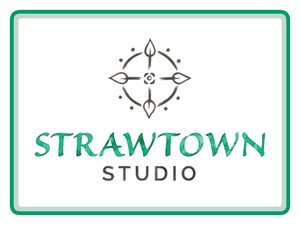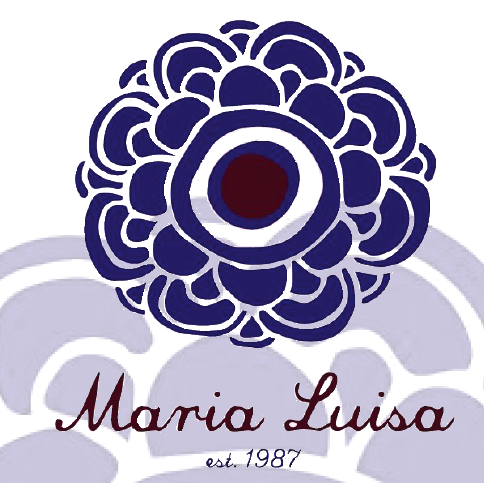
Earth Matters focuses on conservation, sustainability, recycling and healthy living. This weekly series is brought to you by Maria Luisa Boutique and Strawtown Studio.
If Earth Matters to you, sign up for our mailing list and get the next installment delivered bright to your inbox.
Honeybees are in the headlines again, and not in a good way.A myriad of issues such as viruses, parasites, diseases, pesticides, etc., threatens these important pollinators of backyard flowers and American food crops. But honeybees are only one of thousands of pollinator species that make hillsides, meadows, home gardens, and acres of farmland bloom. Wild pollinators, who work entirely without human managers, are also under threat, mostly from habitat loss. Now, concerned humans are stepping up to help support honeybees and all their wild pollinator cousins, by creating pollinator pathways through our overdeveloped towns and suburbs.
To get the latest on the state of our local pollinators, and the “pollinator pathways” project coming soon to Nyack, Earth Matters spoke to local professional beekeeper Dana Harkrider.
What do you do, and how did you get involved with bees and pollinators?
I live in Nyack, and have been a beekeeper for about six years now. I first got interested in keeping bees around 2006, when I read about colony collapse disorder. I felt that if the honeybees die, we’re going to lose a lot of our food supply, and thought that if anything was going to be done to help the honeybee, it was probably going to come more from backyard, small-scale beekeepers. Now I’ve got about 13 different colonies spread over Nyack and Palisades, one in my own backyard, and more with a beekeeping partner, Lomar Farms, in Palisades. I’ve also got a couple of different clients whose hives I maintain throughout the year. And I’m currently finishing up the Master Beekeeping Program at Cornell University
Honeybees get all the press. What is a pollinator?
A pollinator is any insect or animal that helps pollinate plants. It’s not only species like bees. There are beetles, moths, butterflies, bats, birds, ants. You’re talking about lots of different species’.
How important are honeybees compared to the wild bees I see on plants around here?
The short answer is that they are both important. Honeybees do a very efficient job at large-scale agricultural pollination, and that’s why they are the most sought after pollinator for stuff like almond orchards. They are managed, and can be trucked around to where they’re needed, whereas native pollinators are not managed. Their habitat must be somewhere close to the crop you are trying to pollinate. As agriculture has become more large-scale and commercial, honeybees have been one of the only pollinators that can provide pollination services on that scale.
Native pollinators like mason bees, squash bees, bumblebees, and carpenter bees are also very important, but don’t get nearly as much attention in the media because honeybees, with the challenges they’ve had, have become the “face” of bee decline.
In fact, aside from honeybees (which were brought to North America by European colonists in the 17th century), there are 20,000 different species of bees in the world—five times more than the number of mammal species. We’ve got about 4,000 of these bee species in the U.S., and about 420 in N.Y. State. The vast majority are native, and have evolved here, and have been providing their services to the ecosystem in various ways. Some are “generalist” pollinators, who will pretty much go to any flower with pollen and nectar that they can forage on. Others are specialists—and there are some instances of a native bee species that only pollinates one particular native flower, which is only pollinated by that particular bee.

A carpenter bee (left) and a honey bee forage on Shrubby St. John’s Wort which, says Dana Harkrider, is covered in all kinds of bees when it blooms. Photo: Dana Harkrider
It sounds like native plants are the prescription for healthy pollinators.
Absolutely. But the vast majority of plants sold in the nursery industry are non-native, originating from other countries. In terms of the benefits that they provide to ecosystems or to pollinators, many of these plants are just like blank space. For example, there’s a “kousa” dogwood tree from China that is gorgeous, and planted all over the U.S. But no insects here can forage on or make a habitat in that tree. But our native dogwood “cornus florida” is also a gorgeous tree, and supports 117 species of moths and butterflies alone, and many other types of pollinators as well. So there is a real difference for pollinators and your ecosystem when you plant something that is native vs. non-native. Just to clarify, there are several non-native plants that provide good pollen and nectar sources for pollinators. In general, though, they don’t contribute nearly as much on an ecosystem level as do native plants.
Where can a gardener find native plants to support bees and other pollinators?
A typical nursery can carry up to 80% non-native versus only 20% native plants. I always recommend going to a local private nursery for plants rather than to a big box store, just because you will get more knowledgeable staff. You should always ask the staff which plants are native to your area. And it pays to do a little research before you go to the nursery.
For more selection, you may have to visit a native plant nursery. Those are becoming more prevalent, and there are several here in the Northeast. For example, the Native Plant Center in Westchester has a native plant sale in the spring, and another at Rosedale Nurseries in Hawthorne, N.Y. in the fall.
There’s also a great mail order nursery in New Jersey called Toadshade Wildflower Farm. They’ve got all native plants, do mail order, and are not far away. Search online for more sources for native plants by mail order for our region.
And even though clover isn’t native, I’m actually a big fan of it because it’s a great pollen source for my bees, and it’s a nice alternative to turf grass, too.

Some bees on Mountain Mint (another plant loved by a lot of different kinds of bees) in Dana Harkrider’s pollinator garden. Photo: Dana Harkrider
What are the biggest challenges facing wild bees and other pollinators?
First, it’s habitat loss. As our world continues to get more and more developed and we lose so many of our natural spaces, we also lose the flowers and trees that all these pollinators forage on. They also need access to soils and woody vegetation to build nests and lay eggs. Without good habitat, and enough to forage on, pollinators aren’t able to complete their life cycles.
And then there’s pesticide use. If bees are foraging on plants that are either covered in pesticides or grown from seeds that are coated with pesticides, they might not die right away, but the sublethal effects of pesticide exposure weaken them and can make them more susceptible to getting sick, or being unable to find their way home. So, garden organically, and encourage your municipality to do so as well.
How friendly is Nyack for pollinators, and how do you plan to make it better?
People plant lots of flower gardens in Nyack, as well as flowering trees, and that’s a good start. There’s a pollinator garden in Memorial Park, near the viewing platform, and a great one next to the Community Garden, which I believe is mostly native plants.

Dana Harkrider’s backyard pollinator garden in bloom in Nyack. Her home beehive is behind all these plants. Photo: Dana Harkrider
For the past few weeks I’ve been working with [Nyack Sustainability Coordinator] Marcy Denker and with [local environmental activist] Lorien Barlow to create a pollinator pathway, with more “connect-the-dots” pollinator habitats throughout Nyack.
We’re just getting started, and are following the example of pollinator pathway groups throughout the U.S. and worldwide, especially the one over in Westchester and Southwestern Connecticut (at pollinator-pathway.org). We will be the first Rockland County outpost for what they have done—helping to connect little fragmented islands of undeveloped space for pollinators, many of which face population die-off, because they can’t range very far in their search of forage. Homeowners can help us by planting pollinator-friendly native plants—even a pot of native flowers on an apartment balcony will help. We’re thinking and hoping that this will be an easy sell, because a lot of people in Nyack already garden very beautifully with native plants.
What is a pollinator pathway?
a pesticide-free corridor of public and private properties that provide native plant habitat and nutrition for pollinators
How can people get involved with the Nyack’s pollinator pathway initiative?
People can email me to volunteer or find out more. We’ve identified some beds around the village, and are now looking for funding. We’re hoping to do a small fall planting—some “pollinator pockets”—and will keep spreading out and filling in between them until we create one continuous “pollinator pathway.”
If we give our pollinators what they need, they’ll pay us back by creating even more abundance of flowers, fruits, and vegetables. If you plant it, they will come.

Honey bee hives. Dana Harkrider with her bees at Lomar Farms in Palisades, NY. Photo: Yvonna Kopacz-Wright
Learn more:
- Find out about the pollinator pathway movement, and how to apply it to your municipality or your own backyard at pollinator-pathway.org.
- Consult the NYS DEC’s lists of native plants, trees and shrubs suitable to your growing. conditions. You’re looking for “the right plant in the right place” says Dana Harkrider, when choosing native plants for your garden (or window box, or porch pot).
Earth Matters, a weekly feature that focuses on conservation, sustainability, recycling and healthy living, is sponsored by Maria Luisa Boutique, and Strawtown Studio. Read Earth Matters every Wednesday on Nyack News And Views, or sign up for the Earth Matters mailing list.











